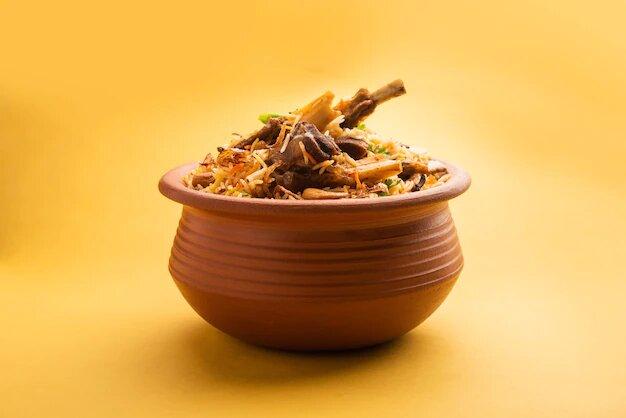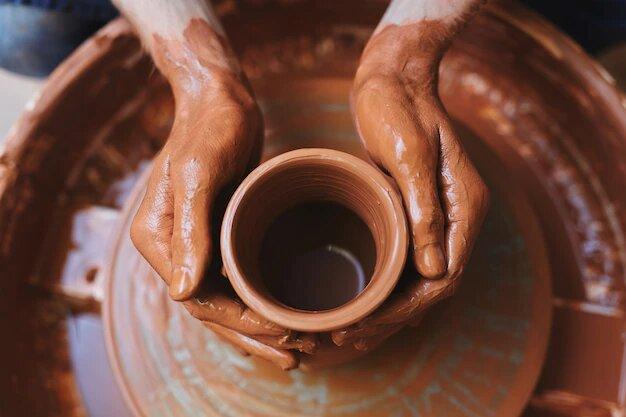For a while I was groping for idea to write about something that is a mark of Sustainable development. Suddenly the bulb of my mind ignited, and I felt that there are indeed very few examples as good as clay pots made by the Indian potters that are mark of Sustainable development.
My memories drifted back to the past, a year back. I reminisced vividly the 9-hour long drive that we took last year from Taki to my home in North Kolkata. We were returning from a tour organised by our office. Our boss, Jayant Biswas had selectively chosen the group and hence I was among good company even during the retreat. In our car there were three of my companions – Jamshed, his wife Moni and Sujata. While we were peeping out to get the window view, of a peaceful noon through the suburbs, Sujata and Moni jumped at the sight of clay-pots being sold at the roadside and alighted from the car to buy. They returned with one clay-handi, each with their faces broadly beaming with smiles.
“Earthen Pots? What for?” I asked.
“Jamshed is fond of Biryani, and it is best cooked in clay-handi. The rice remains fresh and the meat succulent”, Chirped Moni.
I knew like all Indians that tea tastes best in Kulhads or clay pots but the new fact about Biryani left me wandering.

Biryani in Clay Handi from Freepik.com
I kept of ruminating those days when Lalu Prasad Yadav first introduced earthen pots in railways for serving beverages and water. That was way back in 2004. Then the United Nations’ promotion for 17 the SDGs were not there. The importance of promoting sustainable development has not become so eminent. Because perhaps we never react rightly without the right push. So, at the start of the initiation of the earthen Kulhads in Railways a lot was told about how the spending of 40p. per cup could lead to the wastage of 1.1 crore for railways in a year. The 1.1 crore was way back in 2004. However, the then railway minister got the praise of most people by introducing Kulhads in railway for so many reasons.
- It gave a boom to the rural pottery industry and brought work for the Indian potters.
- Earthen pots are most hygienic if properly washed and served.
- Kulhads retains the taste of beverages like no other pots can.
- The earthen utensils reduce impurities and bacteria to a large extent.
- It saves the palm from burning while holding hot beverages
- It is biodegradable.
- Considering the uses the cost implied is not much.
Still, we often fail to retain what is already good due to our ego and agenda and keep on experimenting, often changing the presence of the good ones already established. With time the earthen Kulhads in the railways went to sleep. Only recently those have been re-initiated again since 2019 and all rail stations in India serve water and beverages in Kulhads now. Sense dawned late is better than never.
However, Indian pottery does not limit itself to earthen Kulhads. There are so many types of pots ; almost all types as we use for the other forms of utensils like plastic or aluminium. For example, the flower vases, the wok, the tumblers, the plates, the bowls, the cups, and the saucers. The cups and the saucers are part of each kitchen in India and abroad. So are the earthen vases that holds flowers or the earthen pots that holds shrubs and saplings. But what about the plates and bowls, woks etc.

Ethnic Earthen Pots holding indoor plants: from Freepik.com
Uses of these are also being re-initiated more with time as people get to realise the ethnicity, purity, and utility of earthen pots. For example, many Indian restaurants are using earthen utensils to serve their guests. With a little bit of added investment, these restaurants are ensuring healthy and safe habits that are especially time – sensitive keeping in view the covid-19 scenario and its aftermath.
What about us, the normal Indian or aam-janta’s stand on earthen pots? In the age of polluting plastics and fragile paper utensils. It is time we use the earthen pots at least some days in the month to bring in elan’ and variety to our mundane life. Spreading the use of earthen pots and promoting it will only give new thrust to the domestic industry in a novel way. It will be a bold step in taking forward the “Aatmanirbhar Bharat”.

Clay Utensil used in Indian Restaurant: from Freepik.com
Do you doubt the capacity of Indian potters? No way. Just to assure you are given some statistics. Now, India exports it pots to over 140 countries. The current volume of export is nearing to 6000000. The export price in USD is currently estimated to more than 10 million per year.
Notwithstanding the above statistics, investing in making or selling of earthen pots require minimum expenses. However, it requires skill and perseverance to bring in the right shape, bake and then taint the pots with colours and impressive pictures. That is why we need more to save the generations of potters and upgrade them with the availability of newer amenities that make their life easier and worth living.

Indian Potter Crafting Magic: from Freepik.com
The more we buy from them, the more we shall honour their work and save the pottery industry. In turn it will provide the country with self-sustenance and development and bring in good revenue from foreign shores.
Thank you for reading this article. Though, I shall feel blessed if at least a few of the readers are inspired to use more the Earthen pots that are a mark of the Sustainable development of Indian Domestic Industry and Living.



 Each title in our collection is more than just a book - it’s a ‘green gift’, promoting mindful reading, sustainable values, and a culture of eco-conscious living. By gifting books, you open doors to new ideas, support lifelong learning, and nurture a more informed, compassionate, and environmentally aware individual.
Each title in our collection is more than just a book - it’s a ‘green gift’, promoting mindful reading, sustainable values, and a culture of eco-conscious living. By gifting books, you open doors to new ideas, support lifelong learning, and nurture a more informed, compassionate, and environmentally aware individual.
Wonderfully described and initiation of earthen pots,infact Indian pottery art.I feel making an earthen pot , makes you creative,vibrant and so much aligned with nature. As if Creation of a new life .Awesome thoughts brought together.
Thanks for liking and reading it